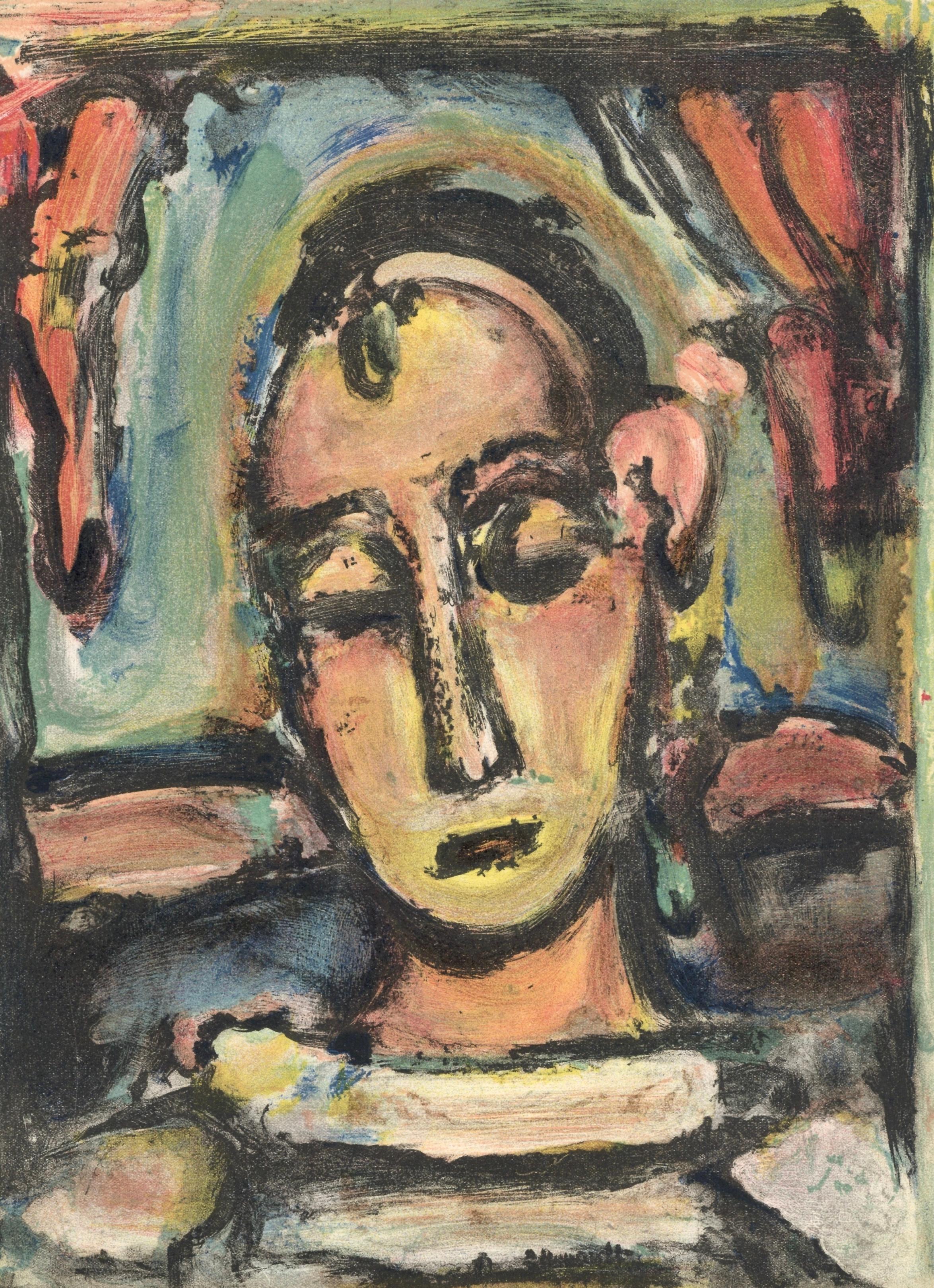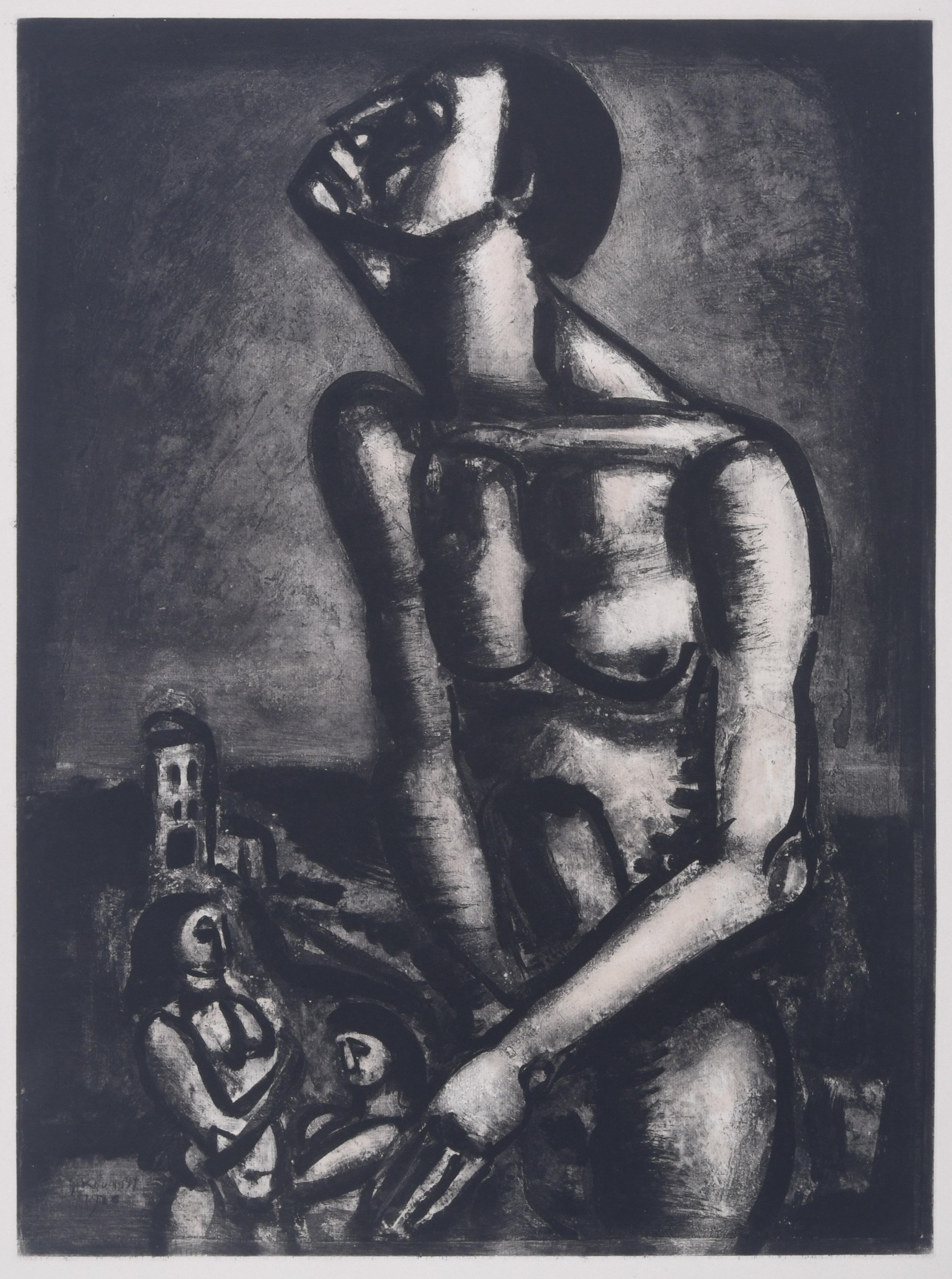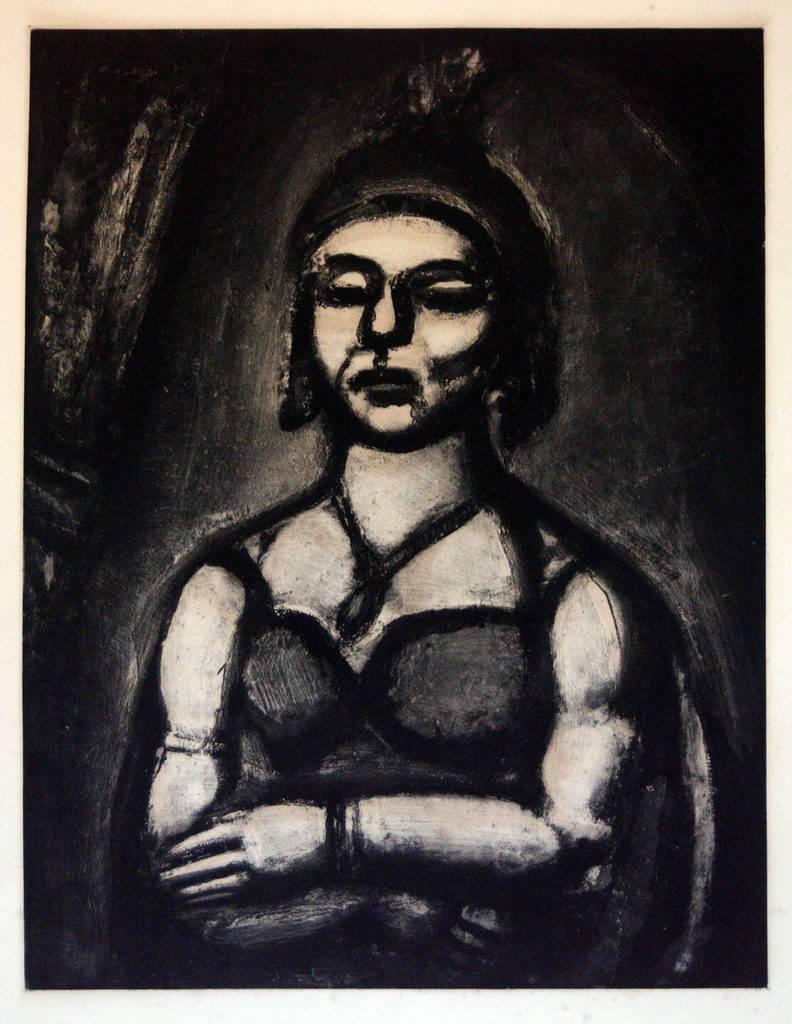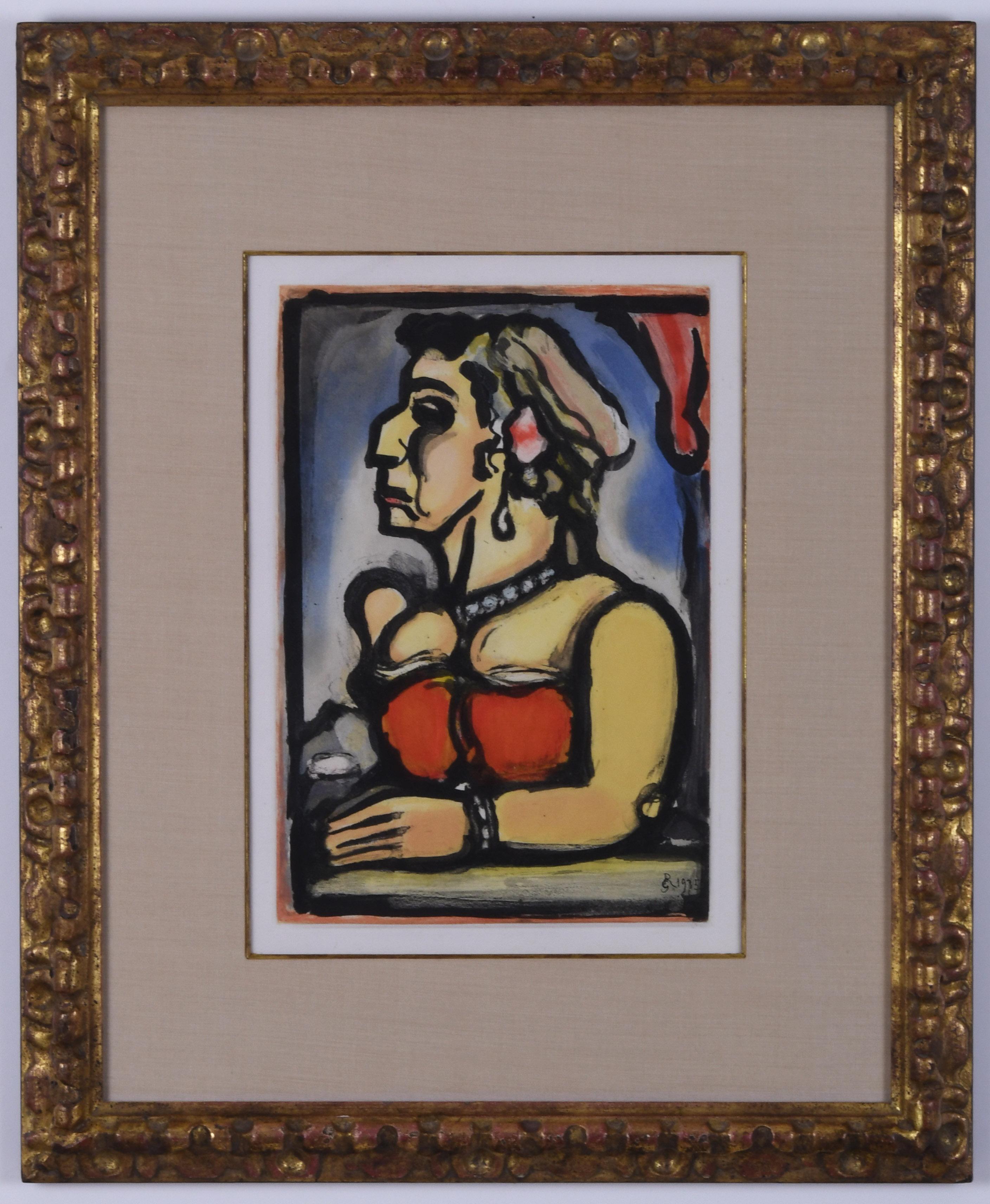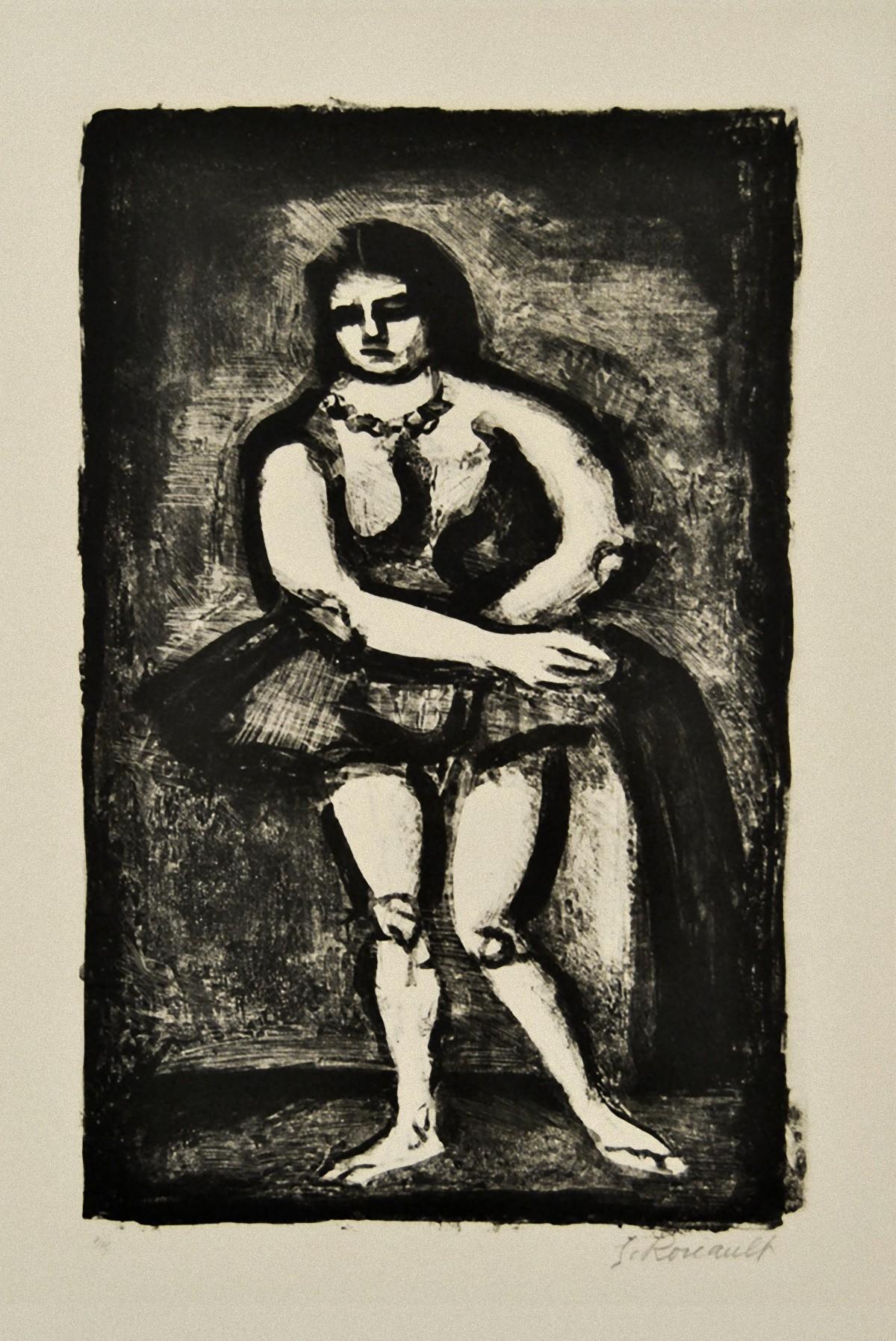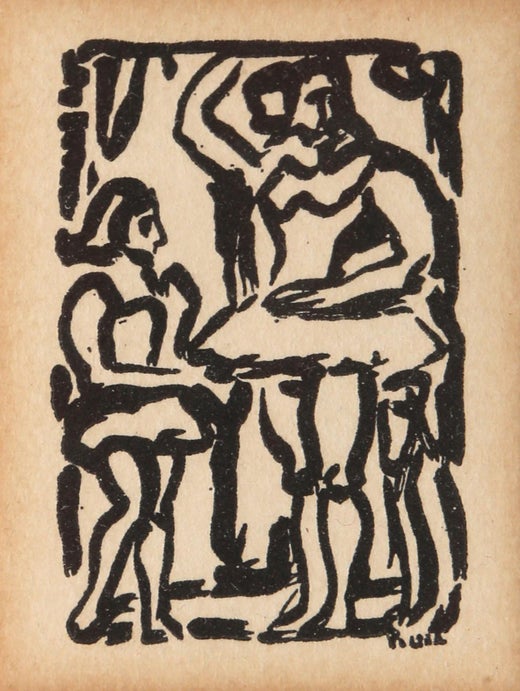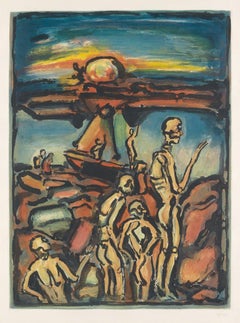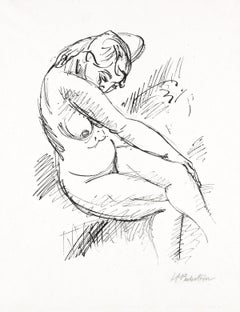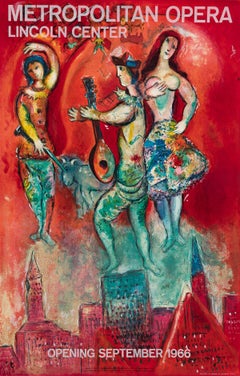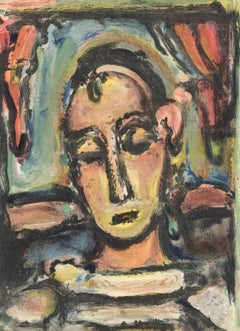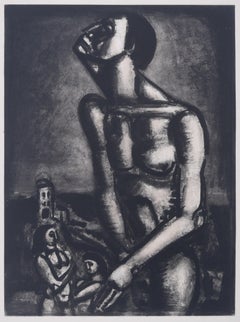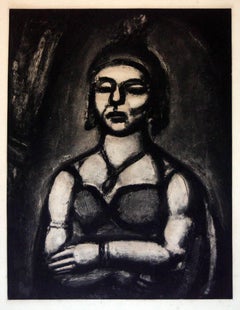Items Similar to Dors mon amour
Video Loading
Want more images or videos?
Request additional images or videos from the seller
1 of 4
Georges RouaultDors mon amour1934
1934
$3,500
£2,658.34
€3,071.26
CA$4,905.38
A$5,490.04
CHF 2,865.38
MX$66,950.17
NOK 36,672.94
SEK 34,715.64
DKK 22,920.38
Shipping
Retrieving quote...The 1stDibs Promise:
Authenticity Guarantee,
Money-Back Guarantee,
24-Hour Cancellation
About the Item
A superb impression of this color aquatint. From an unnumbered edition of 280. Printed by Lacouriere, Paris. Published by Vollard, Paris. From "Cirque de l'Étoile Filante."
Catalogue reference: Chapon/Rouault 256; Wofsy 335
- Creator:Georges Rouault (1871-1958, French)
- Creation Year:1934
- Dimensions:Height: 12.25 in (31.12 cm)Width: 8.25 in (20.96 cm)
- Medium:
- Movement & Style:
- Period:
- Condition:
- Gallery Location:New York, NY
- Reference Number:1stDibs: LU1477210870132
Georges Rouault
Executed in 1937, Carlotta belongs to a group of portraits of members of society. Unlike Picasso and Toulouse-Lautrec, who portrayed these individuals with pathos, Rouault’s approach was unapologetic and raw. In the present work several layers of pigment can be discerned; the build-up of translucent and opaque layers of paint creates a three-dimensionality that characterizes the artist’s strongest work. Furthermore, the work is highlighted by the deep swaths of black delineating the subject, representing a signature element of Rouault’s portraiture of this period.
About the Seller
4.9
Gold Seller
Premium sellers maintaining a 4.3+ rating and 24-hour response times
Established in 2020
1stDibs seller since 2021
108 sales on 1stDibs
Typical response time: 10 hours
- ShippingRetrieving quote...Shipping from: Union City, NJ
- Return Policy
Authenticity Guarantee
In the unlikely event there’s an issue with an item’s authenticity, contact us within 1 year for a full refund. DetailsMoney-Back Guarantee
If your item is not as described, is damaged in transit, or does not arrive, contact us within 7 days for a full refund. Details24-Hour Cancellation
You have a 24-hour grace period in which to reconsider your purchase, with no questions asked.Vetted Professional Sellers
Our world-class sellers must adhere to strict standards for service and quality, maintaining the integrity of our listings.Price-Match Guarantee
If you find that a seller listed the same item for a lower price elsewhere, we’ll match it.Trusted Global Delivery
Our best-in-class carrier network provides specialized shipping options worldwide, including custom delivery.More From This Seller
View AllLa Baie de Trépassés
By Georges Rouault
Located in New York, NY
An excellent impression of this large color aquatint. Numbered in pencil 99/175. Printed by Lacourière, Paris. Published by Vollard, Paris.
Catalogue reference: Chapon/Rouault 141; ...
Category
1930s Expressionist Abstract Prints
Materials
Color, Aquatint
Weiblicher Akt
By Max Pechstein
Located in New York, NY
A very good impression of this scarce, early lithograph on Japan paper. Signed in pencil by Pechstein.
Category
1960s Expressionist Figurative Prints
Materials
Lithograph
Carmen
By (after) Marc Chagall
Located in New York, NY
A very good impression of this color lithograph. Edition of 3000. Printed by Mourlot, Paris. Published by Editions of the Metropolitan Opera, New York.
Category
1960s Fauvist Abstract Prints
Materials
Color, Lithograph
L'Éventail rose
By Marie Laurencin
Located in New York, NY
A very good impression of this scarce color etching and drypoint. Fourth state (of 4). Signed and numbered 54/100 in pencil, lower margin.
Category
1920s Cubist Abstract Prints
Materials
Color, Drypoint, Etching
Les Deux Anges
By Marie Laurencin
Located in New York, NY
A very good impression of this lithograph with strong colors. Second state (of 2). Signed and numbered 19/160 in pencil, lower left.
Category
1940s Cubist Abstract Prints
Materials
Color, Lithograph
L'Hibou Rouge
By Karel Appel
Located in New York, NY
A very good impression of this color lithograph on Arches. Artist's proof, aside from the edition of 75. Signed, dated and inscribed "ea" in pencil by Appel.
Category
1960s Modern Abstract Prints
Materials
Color, Lithograph
You May Also Like
Tête de Jeune Fille, Verve: Revue Artistique et Littéraire
By Georges Rouault
Located in Auburn Hills, MI
Lithograph on vélin des Papeteries du Marais paper. Paper Size: 14 x 10.25 inches. Inscription: Signed in the plate and unnumbered, as issued. Notes: From the album, Verve: Revue Art...
Category
1930s Fauvist Figurative Prints
Materials
Lithograph
$716 Sale Price
20% Off
Ne sommes-nous pas forçats? (Are we not Slaves?)
By Georges Rouault
Located in Fairlawn, OH
Ne sommes-nous pas forçats? (Are we not Slaves?)
Aquatint and heliogravure on Arches laid paper watermarked "Ambroise Vollard"
Signed and dated in the plate lower left (see photo)
P...
Category
1920s French School Figurative Prints
Materials
Aquatint
Des Ongles Et Du Bec
By Georges Rouault
Located in Roma, IT
Edition of 450 prints, belonging to the suite “Miserere”, considered as the most important religious graphic work of XX century.
The single prints, realized with a sophisticated mixe...
Category
1940s Post-Impressionist Figurative Prints
Materials
Etching
"Courtisane aux Yeux Baisses" from the suite "Les Fleurs du Mal""
By Georges Rouault
Located in San Francisco, CA
This artwork titled "Courtisane aux Yeux Baisses" from the suite "Les Fleurs du Mal" created in 1937, is an original color aquatint on Montval paper by renown French artist Georges Rouault, 1871-1958. It is signed and dated in the plate as issue. Published by Ambroise Vollard, Paris and printed by Lacouriere, Paris. Referenced and pictured in the artist's catalogue raisonnes by Chapon plate #276, Wofsy plate #273. The plate mark (image) is 11.75 x 8.15 inches, framed size is 20.5 x 17.25 inches. Custom framed in a wooden brownish and gold frame, with fabric matting and black fillet. Artwork and frame are in excellent condition, the colors are fresh and bright. Example of this artwork is held in many museums including The National Gallery of Art.
About the artist:
French painter, draughtsman, printmaker and designer, Georges Rouault created a personal style of Expressionism that gives him a highly distinctive place in Modern Art. Rouault was born in 1871, in the cellar of a house in Belleville, a working class quarter of Paris near the Père Lachaise cemetery, while the city was being bombarded by government troops quelling the Paris Commune. His father was a finisher and varnisher of pianos at a local factory. Rouault's grandfather was an amateur art...
Category
Mid-20th Century Expressionist Figurative Prints
Materials
Aquatint
Madame Carmencita, Plate 9
By Georges Rouault
Located in Fairlawn, OH
Madame Carmencita, Plate 9
From: Cirque de l'etoile filante (Circus of the Shooting Star), 1934-1936 (published 1938)
Signed with the artist's initials and dated, lower right of plat...
Category
1930s French School Figurative Prints
Materials
Aquatint
L'Ecuyère - Lithograph by Georges Rouault - 1920
By Georges Rouault
Located in Roma, IT
L'Ecuyere is a beautiful original lithograph realized by Georges Rouault in 1920.
Hand-signed and numbered by the artist in pencil.
Edition of 25 prints.
5th ad final state of a s...
Category
1920s Modern Figurative Prints
Materials
Lithograph
More Ways To Browse
Georges Rouault Aquatint
Miro Aquatints
Picasso Flower Print
Circus Etching
Corbusier Lithograph
George Washington Plate
Joan Miro Bird
John Walker Abstract Prints
Retro Futurism Painting
Le Corbusier Lithograph
Six N Five
Vintage Circus Light
Buffalo Plate
James Rosenquist Lithograph
Riopelle Lithographs
Art Brut Sculpture
Antoni Clave Lithograph
Merce Painting
